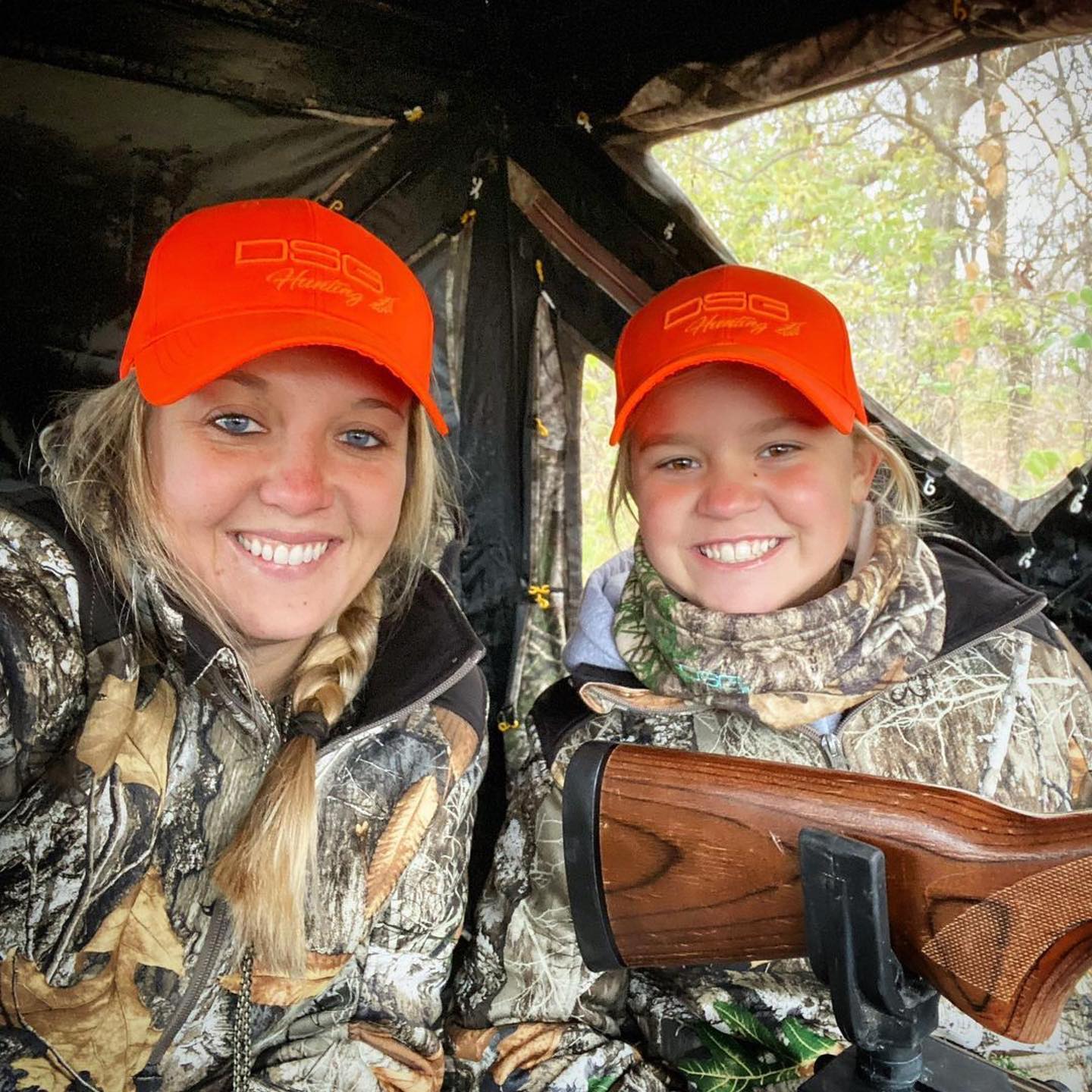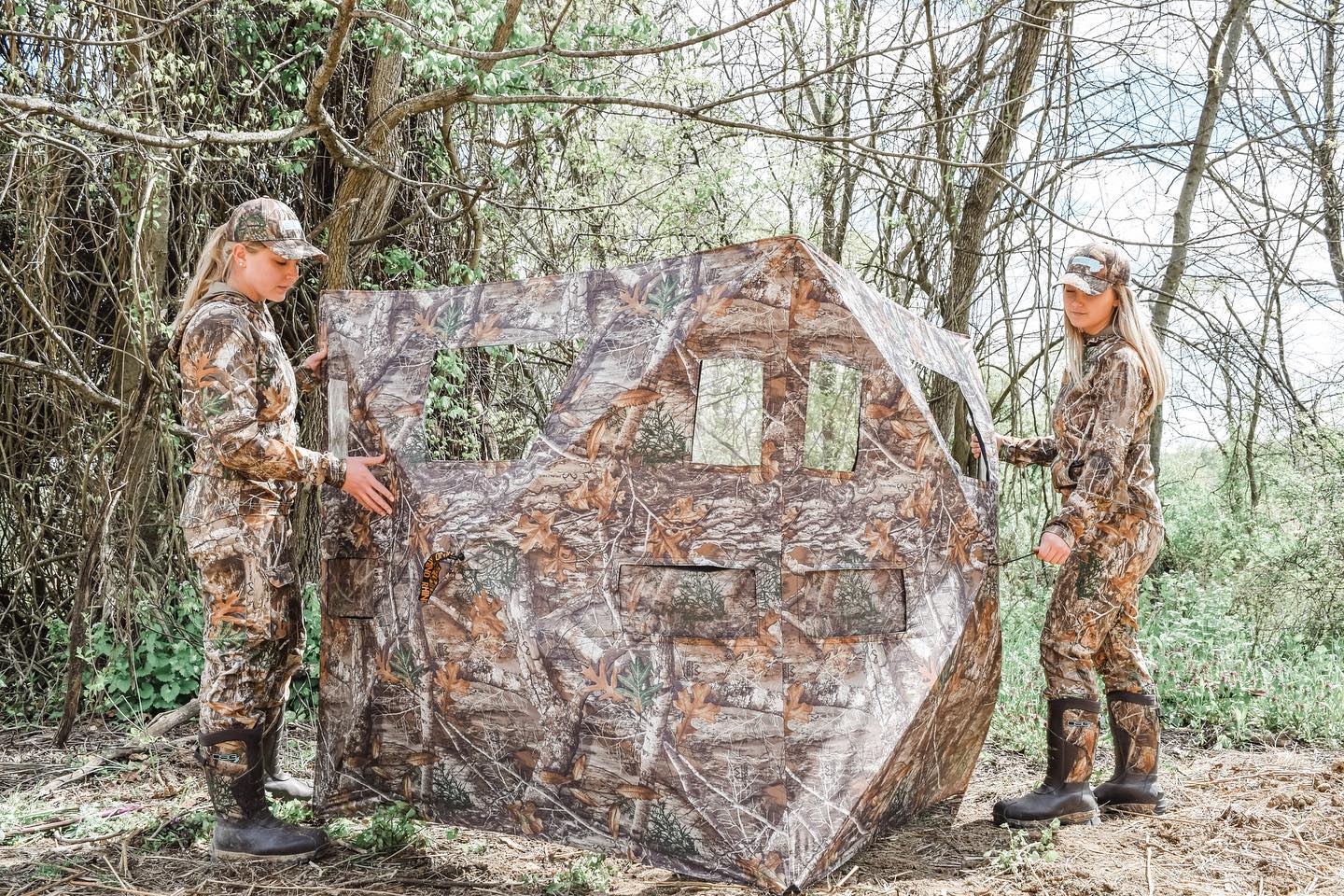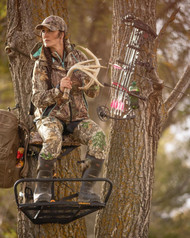What to Choose: Treestands vs. Blinds
Posted by Samantha Simma on Sep 20th 2021
You could call the question of whether to go with a blind or treestand the great deer hunter debate. There are pros and cons to each, and loyalists are steadfast in their choice. At the end of the day, no matter which side you take, there’s no clear right or wrong…but there may be reason to lean toward one or the other in certain scenarios. When considering the two, factor in the following during your decision making:
The Pros of Treestands
The biggest advantage of treestands is the vantage point they provide. With their height in the trees comes added visibility for hunters to survey the surroundings. The argument has also been made that deer are less likely to look for threats from above, seeing as their natural predators don’t pursue them from overhead.
When it comes time to take a shot from a treestand, you’ll often have more options than you woul

d in a blind—which restricts your shooting lanes to the windows of the blind. With the wider field of vision you have from a stand, you’ll have a wider range of shot options. You can also make farther shots when elevated, but keep in mind that angled shots narrow your kill zone. You’ll have to keep angles in mind when honing in on the best shot to take.
The Cons of Treestands
Not all hunting areas look the same—and some may lack suitable trees for a treestand. Even if there are trees available to use, the perfect tree doesn’t always coincide with the perfect hunting zone. To that end, treestands require more setup and logistics than a ground blind. Ideally, you would setup a treestand before the season starts, allowing the animals in the area to get used to its presence. When you place a treestand on public land, there is some risk for theft. Sometimes, it’s just easier to haul in and out a lightweight, pop-up blind.
When situated in a treestand, you’re more exposed, while blinds offer nearly complete concealment. On the one hand, this exposure can force you to pay more attention and be more mindful of your movements and the sounds you might make. Treestands are somewhat concealed by foilage or surrounding trees, but foilage disappears when the leaves fall and those surrounding trees can make shots difficult. You can see how there’s an upside and downside to all these factors! It becomes a matter of determining which are most important to you.
The Pros of Blinds
A blind’s biggest asset is its versatility—they can be set up practically anywhere and give hunters great concealment in a variety of hunting situations. If you want to pick up and try a new area, it’s easy to do so with a blind. Because of this mobility and ease of use, blinds are great options for new hunters.

While offering a great deal of concealment, blinds also shield you from the elements (rain, wind, snow), which may help you do longer hunts. Overall, blinds are much more comfortable and spacious than tree stands. With plenty of room to stretch and for your gear, hunters can move around more inside a blind than they would in a stand. In this way, when it comes time to set up for a shot, you’re able to do more adjustments. Plus, many modern blinds have a shooting rail or rest to take your shot from—or you can easily grab a shooting stick inside a blind. Either way, being steady increases your odds of making a clean kill shot.
Finally, the biggest argument made in favor of blinds is for their safety. Accidents have happened in tree stands, resulting in injuries. It’s easier to get yourself, your gear, and your weapon into a blind on a dark, early morning.
The Cons of Blinds
Blinds force you to take shots out of the available shooting windows, which limits your shots to the shooting lanes that are visible from those openings. The deer don’t always cooperate with those shooting lanes, and it can be difficult to see the movement of your prey outside of these windows. Not to mention, at ground level, your line of sight is limited to what’s in front of you. Topography and vegetation can further decrease your visibility, an essential asset to any hunt.
As much as blind shield what’s inside them, they can stick out amongst the environment. Deer are automatically wary of new things popping up in the areas they know well. If possible, you should set up the blind well before your hunt and camouflage it with natural vegetation from the area. However, this counts against the mobility blinds are so appreciated for.

The Final Word
Ultimately, if you think critically about the area you’ll be hunting—its topography, tree availability, and visibility—that will have the greatest sway on your decision. A treestand or blind isn’t perfect in every hunting situation, that’s why the two coexist in the hunting world. If you can become comfortable using both setups, then you will have greater versatility and flexibility as a hunter, allowing you to choose what to use on a hunt-by-hunt basis.

